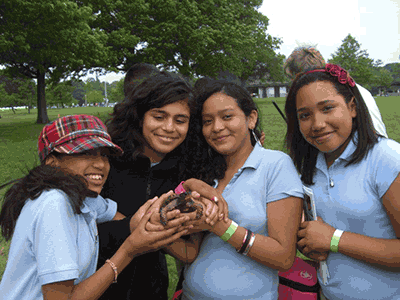Create Your Schoolyard Habitat!
Creating a schoolyard habitat can seem daunting. Thankfully, a multitude of organizations have provided step-by-step information on how to do just that! The guides below contain information on basic ecological concepts, what you will need to get started, how to gather and maintain community support, and ways to effectively utilize your habitat with students. Some of the basic Schoolyard Habitat creation steps include:
-
Set up a Habitat Team -
Who will help with implementation?
-
Create a Vision -
What are your site goals?
-
Survey Existing Elements -
What do you already have in place? What can be improved upon?
-
Assemble a Plan -
What needs to be accomplished? What is your budget and timeframe? Where can you find the resources needed to complete your project?
-
Assemble the Elements – Where can you find materials? How will you engage students and volunteers in the creation of the project?
-
Integrate Learning-
What outdoor learning opportunities will students engage in? How can these activities fit in with classroom learning?
-
Ensure Continued Success -
How will the site be maintained? Who will monitor the site? How can parents get involved?

Photo by: Dana Limpert
To assist with the steps above, check out the following garden, play space and habitat creation guides and references:
Native Plants
One important element to any schoolyard habitat is to include plants native to your area. Did you know that one family of chickadees needs over 3,000 caterpillars to raise their young? Native plants are those that occur naturally in a given area. Because native plants have co-evolved with local wildlife, native plants are the best options for wildlife-friendly schoolyards. In addition to supporting wildlife, native plants require less care and maintenance than exotic and ornamental varieties. The following resources provide information about native and invasive plants in Maryland.
Landscaping for Wildlife
On their own, native plants will attract a variety of native wildlife species to your habitat, including insects,
birds,
reptiles,
amphibians, and
mammals. Additional spaces and amenities can be created for wildlife as an added benefit.

Photo by: Chesapeake Bay National Estuarine Research Reserve